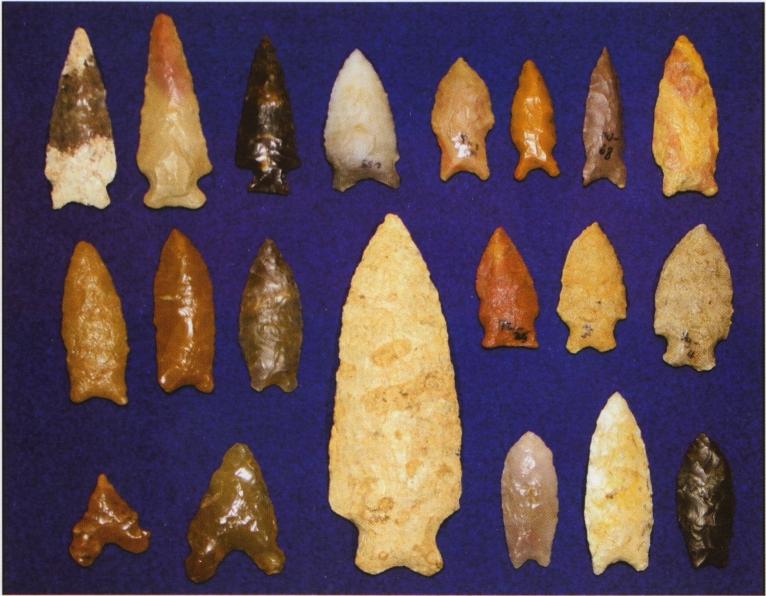by Tom Westfall, Sterling, Colorado
Originally Published in the Central States Archaeological Journal, Vol.56, No.4, pg.200
Originally Published in the Central States Archaeological Journal, Vol.57, No.2, pg.80

At the end of the altithermal, ca 4,600 BP, it is likely that conditions on the high plains became more suitable for habitation. Following the river systems, aboriginal folk came east out of the foothill area of what is currently referred to as the “Front Range area of Colorado” and out onto the Great Plains of eastern Colorado and western Nebraska.
The Middle Archaic time period on the plains witnessed a wide variety of morphologically similar points that seem to have “evolved” over time. During this time period, the Bison Bison began to appear to establish themselves on the prairie, and although they were obviously hunted by those inhabiting this region, most of what we know about this time period has been discovered in habitation sites rather than in kill sites. This may suggest that with the disappearance of the mega-fauna, the emphasis for subsistence may have morphed from hunter/gatherer to a more sedentary life that included hunting, but may have focused more upon other avenues of food procurement.
Point types during this time period on the plains of eastern Colorado and western Nebraska include, among others: Oxbow; Shouldered McKean (which used to be called Hanna and Duncan—Taylor: Projectile Points of the High Plains) McKean, Mallory, and Yonkee. It has been suggested that the Oxbow evolved into the Shouldered McKean, which morphed into the McKean and then into the Yonkee. The Mallory style point is quite unique, though it is found almost exclusively in sites that also contain McKean style projectile points. Recently a number of high plains collectors have begun isolating another type of point which may require its own classification. Whereas most McKean points exhibit rather poor flaking (especially when contrasting the flaking to Paleoindian), Masters points, as they are becoming known as, are exceptionally well flaked.
It would be tempting to just lump the Masters point in with Shouldered McKean, or even Yonkee, but they seem to be a more distinct type of point. It may be that Masters points are unresharpened Shouldered McKeans, because McKean type points were often heavily resharpened in the haft, changing the original morphology radically. Obviously most of the points recovered at habitation sites are those that have served their purpose and have been discarded.
The Master’s point (named for a site near the town of Masters, Colorado) is gaining some popularity and further study would probably be warranted to determine whether or not this point type is indeed worthy of its own classification.
At top: Figure 1. Four “Masters” points from eastern Colorado and western Nebraska. Largest at far left is 21/4 inches in length.
Masters points are somewhat square-based, a mid-notch in the bottom of the base. Whereas Yonkee point seems to come quickly to a point, Masters points have a more parallel blade which often exhibits very fine flaking. Additionally, basal configuration of the Yonkee appears to be interestalmost corner-notched rather than stemmed, with the lateral edges of the base flaring slightly up rather than straight across as is the case with the Masters point.
There is a dearth of professional archaeology (whereas on the plains of eastern Colorado, western Nebraska as it relates to the Archaic and Middle-Archaic time periods. In the absence of a systematic analysis of point types through ongoing speculation will abound. To some extent that’s one of the things that makes our shared hobby so enjoyable. Hopefully these thoughts about a potential new point type will spur the interest of some aspiring young student to be archaeologist, and a data base of these interesting projectile points can begin to be assembled.

Figure 2. A variety of Middle Archaic points, including, Yonkee, McKean, Shouldered McKean and Oxbow from eastern Colorado and western Nebraska. Center point measures 3 inches in length.”Used by Permission of the Author”
To learn more about or to join the Central States Archaeological Society, click here:CSASI.org
